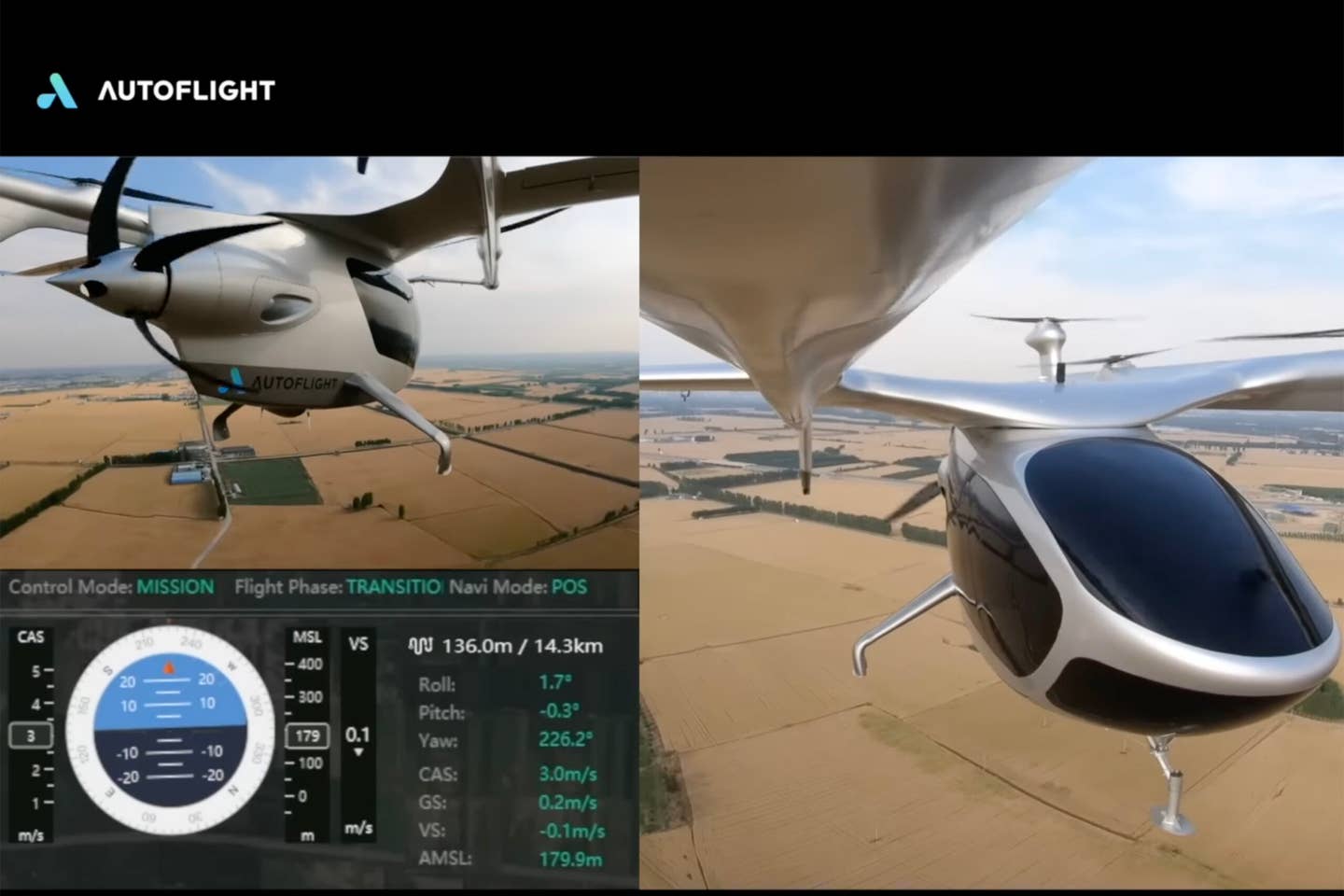Watch: Test Flight of New Proof of Concept eVTOL
AutoFlight this week released a flight test video of its latest proof of concept electric vertical takeoff and landing (eVTOL) air taxi, named Prosperity I.

The new video shows the proof of concept air taxi demonstrator performing multiple phases of flight [Courtesy: AutoFlight]
AutoFlight this week released a flight test video of its latest proof of concept (POC) electric vertical takeoff and landing (eVTOL) air taxi, Prosperity I.
This is the second POC eVTOL from the company, which has facilities in Shanghai, China, and Augsburg, Germany. Since its first flight in April, the aircraft has successfully performed more than 30 transitions between vertical and horizontal flight, according to AutoFlight.
The eight-minute test flight video—posted on YouTube on Tuesday—includes real-time metrics. It shows the aircraft performing multiple phases of flight including vertical takeoff, forward transition, cruise, back transition, and landing.
“This further demonstrates the great potential of our lift and cruise configuration which combines simplicity and safety,” said Mark Henning, managing director of AutoFlight Europe in a news release. “We will encompass all these key experiences and learnings into the final, full scale, design of Prosperity I which we will be revealing later this year.”
Henning came to AutoFlight last January after more than two decades as a program manager at Airbus (Euronext FR: AIR.FP).
His arrival came on the heels of AutoFlight’s $100-million injection of new capital from Team Global, a Germany-based tech holding company that has also invested in leading eVTOL developers Archer Aviation (NYSE: ACHR) and Volocopter.
About the Aircraft
AutoFlight is one of a handful of eVTOL developers looking to create an entirely new form of environmentally friendly air transportation for short hops over traffic congested cities.
This new POC includes eight optimized lifting proprotors for increased hover efficiency, AutoFlight says. The twin pusher propellers located on either side of the previous POC aircraft have been replaced with a single center propeller powered by twin motors “to enhance cruising abilities.”
The final design is expected to accommodate up to three passengers and a pilot. Its intended range is 250 km (135 nm) and maximum speed 200 km/h (108 knots).

Sign-up for newsletters & special offers!
Get the latest FLYING stories & special offers delivered directly to your inbox






